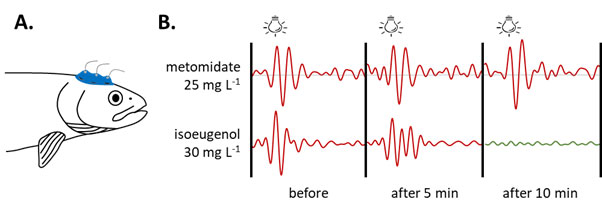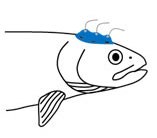There are over 30000 species of fish, living in a wide range of habitats. To treat ‘fish’ as one group is probably even less meaningful than to attempt to produce general guidelines for ‘mammals’. In this project, we will focus on three model species, i.e. zebrafish (Danio rerio), brown trout (Salmo trutta) and rainbow trout (Oncorhynchus mykiss), Representing fish in laboratory experiments, environmental monitoring, and aquaculture respectively.
In this project, we will determine how different anaesthetics affect the health and welfare of fish and to what extent are the effects context dependent. In a series of studies, we will investigate the induction time of unconsciousness of different doses and substances, using state of the art methods; including non-invasive technique to record electroencephalogram (EEG) and Electrocardiography (ECG). Following the different drug treatments, fish will be left to recover while the behaviour of the fish will be recorded to gain information regarding the link between induction time, development of hypoxemia and recovery time for different doses and substances. We will also take blood and brain samples at the termination of the experiments to measure primary stress hormones and concentrations of monoamine neurotransmitters. For fish released into the wild, growth and survival will be complimented by long-term measurements of heart rate, body temperature and activity patterns using bio-loggers. These experiments will be the most thorough one’s ever done on anaesthetics for fishes in relation to behaviour and animal welfare.

Using a novel non-invasive technique for determining if consciousness is lost in rainbow trout during induction of anaesthesia. (A) A schematic of the custom-made cutaneous brain electrodes used to measure the electrical brain activity (i.e. electroencephalogram, EEG) in rainbow trout. (B) Visually evoked response (VER) in the EEG (or loss thereof); before, after 5 and 10 min exposure to the anaesthetics metomidate or isoeugenol. The green line indicates a complete loss of VERs after induced after 10 min by the isoeugenol.

